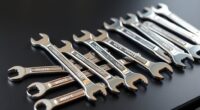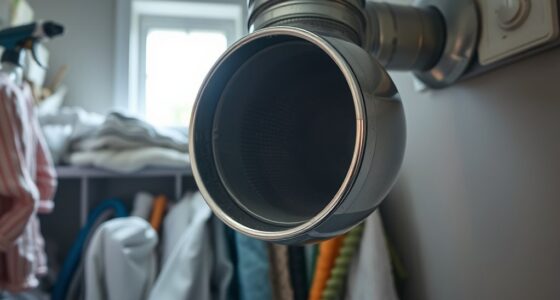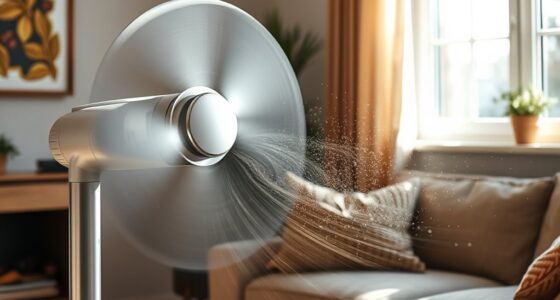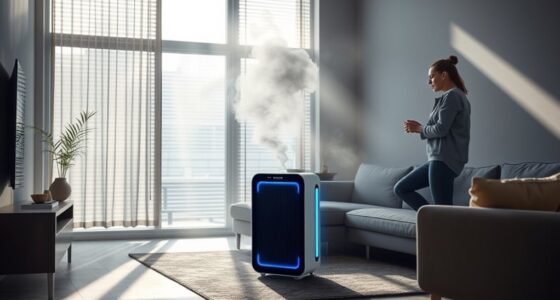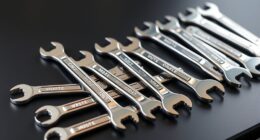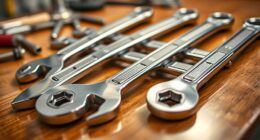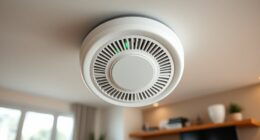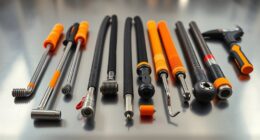Blocked return or supply vents can reduce your HVAC system’s efficiency, causing uneven temperatures and higher energy bills. Return vents pull air back into the system, while supply vents push conditioned air into your rooms. When these vents are obstructed by furniture, dust, or coverings, airflow is disrupted, forcing your system to work harder. Ensuring your vents are clear and properly placed can improve comfort and save energy—you’ll discover more ways to optimize your system below.
Key Takeaways
- Blocked or obstructed return vents reduce airflow, forcing HVAC to work harder and decreasing cooling efficiency.
- Properly placed supply vents ensure even distribution of cooled air, preventing hot or cold spots.
- Obstructions from furniture or coverings can hinder both return and supply vents, impairing airflow.
- Regularly inspecting and clearing vents maintains optimal airflow and prevents cooling loss.
- Ensuring both vent types are unobstructed helps reduce energy bills and prolongs HVAC system life.
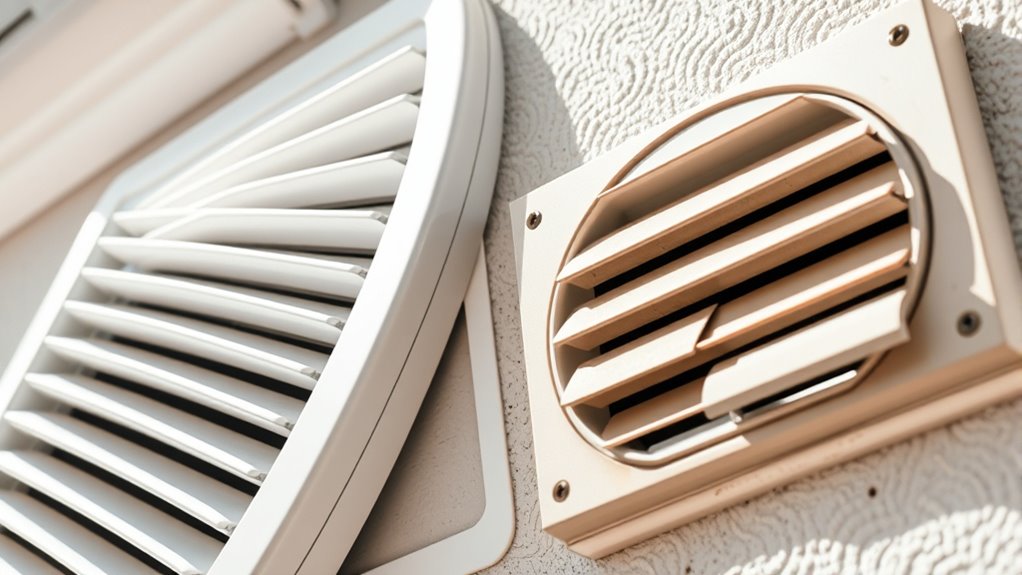
Have you ever wondered what the difference is between return and supply vents in your HVAC system? Understanding this can make a big difference in how well your system heats or cools your home. Return vents pull air from your rooms back into the system, while supply vents push conditioned air out into your living spaces. Proper vent placement and clear airflow are essential to maintaining airflow efficiency, guaranteeing your system runs smoothly without wasting energy. If either type of vent is blocked or improperly positioned, it can disrupt this balance, leading to uneven temperatures and higher energy bills.
Return vents are typically located on walls or near the ceiling, and their main job is to draw air back into the HVAC system for reheating or cooling. If these vents are blocked by furniture, curtains, or other obstacles, airflow efficiency drops. When airflow is restricted, your system has to work harder to maintain the desired temperature, which can cause unnecessary strain on the equipment and increase energy consumption. Additionally, blocked return vents can lead to poor indoor air quality because the system isn’t circulating air effectively.
Supply vents, on the other hand, are positioned to distribute conditioned air into each room. Their placement is vital for ideal airflow. If supply vents are blocked or poorly located—say, behind furniture or in corners—air may not circulate evenly, creating hot or cold spots. This uneven distribution forces your HVAC system to run longer to reach set temperatures, again reducing airflow efficiency. Making sure that supply vents are well-placed and free of obstructions helps maintain consistent temperature levels and comfort throughout your home.
To prevent these issues, regularly check both types of vents for blockages or dust buildup. Make sure supply vents are unobstructed and positioned in spots that promote even airflow—near windows, doors, or open spaces work best. For return vents, keep them clear from furniture and ensure they’re not sealed or covered. Proper vent placement isn’t just about convenience; it’s about maximizing airflow efficiency to save energy and extend the lifespan of your HVAC system.
If you notice uneven cooling or heating, it might be time to evaluate your vent placement and check for blockages. Small adjustments, like rearranging furniture or cleaning vents, can make a significant difference. Remember, your HVAC system operates most efficiently when airflow is unobstructed and vents are correctly positioned. Taking these simple steps can help ensure your home stays comfortable without wasting energy or money.
Additionally, choosing the right airless paint sprayer and maintaining it properly can improve your painting projects, just as proper vent placement improves HVAC efficiency.
Frequently Asked Questions
How Do I Identify Blocked Return Vents in My Home?
To identify blocked return vents, check for signs of vent blockages and airflow disruption, like weak or inconsistent airflow from your vents. Feel for any dust buildup, debris, or furniture covering the vents, which can restrict airflow. Also, notice if rooms aren’t cooling evenly. If you feel reduced airflow or suspect vent blockages, inspect and clear the vents to restore proper airflow and prevent your system from working harder.
Can Blocked Supply Vents Cause Higher Energy Bills?
Blocked supply vents can definitely cause higher energy bills because they reduce your HVAC system’s efficiency. When vents are blocked, your system works harder to heat or cool your home, wasting energy. Coincidentally, ensuring your supply vents are clear improves vent blockage and boosts energy efficiency. So, check your vents regularly and keep them unobstructed to save money and keep your home comfortable.
What Are the Signs of Inadequate Airflow Due to Vent Issues?
You notice uneven cooling or heating, which indicates airflow restrictions caused by vent obstructions. Feel for hot or cold spots in your rooms, and listen for unusual noises from vents. If vents are dusty or blocked by furniture, airflow diminishes. Reduced airflow can cause your system to work harder, increasing energy bills. Regularly check and clear vent obstructions to guarantee proper airflow and maintain your HVAC system’s efficiency.
How Often Should I Inspect and Clean My Vents?
You should inspect and clean your vents every 1 to 3 months to maintain ideal airflow and guarantee vent maintenance. Regular checks prevent dust buildup, blockages, and airflow issues, keeping your cooling system efficient. Visualize removing debris, wiping down vent covers, and checking for obstructions, which helps enhance airflow. Consistent maintenance not only prolongs your system’s life but also keeps your space comfortable and energy-efficient.
Are There DIY Methods to Improve Vent Airflow Effectively?
Yes, you can improve vent airflow with DIY methods. Start by vent cleaning to remove dust and debris that block airflow. Use a vacuum with a brush attachment or a soft brush to clean vents and ducts. Check for obstructions or furniture blocking the vents and reposition them if needed. Regular maintenance like this boosts airflow efficiency, keeps your system running smoothly, and helps maintain a comfortable indoor environment.
Conclusion
Now that you know the difference between return and supply vents, it’s clear they work together like a well-choreographed dance to keep your home comfortable. If either gets blocked, it’s like throwing a wrench in the gears—your cooling system struggles, and your energy bills rise. Keep vents unobstructed and balanced, so your home breathes easy. Think of your vents as the lungs of your AC—when they’re clear, everything runs smoothly like a well-oiled machine.

